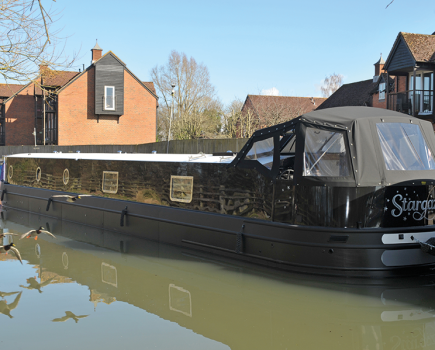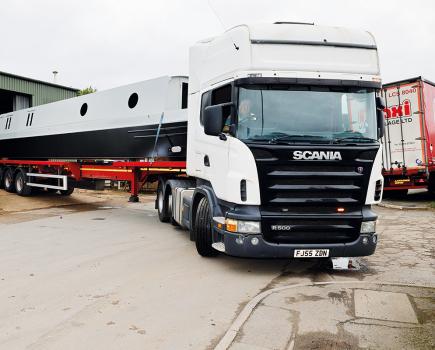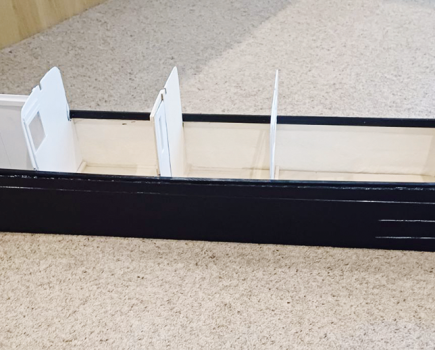Never been on a canal boat before? Worried that it might be too difficult for you? There’s no need to be concerned: hundreds of first-time hirers do it every year.

The basics of canal boating are very straightforward and your hire company will provide a full handover, which includes familiarising you with controlling the boat. They will normally accompany you through the first lock, too, making sure you understand everything.


Above all, everything happens slowly and the canals have been described as ‘the fastest way of slowing down’ – it’s the relaxed pace of life that attracts so many people to the waterways.


There is a fascinating variety of canals and rivers to explore in the different areas of our beautiful and historic waterways network – it might be peaceful, quiet countryside you’re looking for, or an energetic week with lots of locks, some glimpses of our industrial heritage – or even a chance to cruise under Spaghetti Junction (yes, really!)
But whatever you choose, don’t spoil your holiday by taking on too much, it’s better to try an out-and-back trip for your first time – then you always know how long it’ll take you to get back to base. And, on the way back, you can visit the places you missed on the way out – and anyway, canals always look different from the opposite direction.
Here’s a quick guide to some of the UK’s waterways to help you enjoy a waterborne holiday!
Wales and Scotland are famous for their stunning scenery – but that’s not all their waterways have to offer. They also feature some of the finest feats of engineering by canal-builders from the 18th Century to the present day. The most famous of those engineering achievements is the spectacular Pontcysyllte Aqueduct, carrying the Llangollen Canal a dizzying 127ft above the River Dee. Take the Union Canal from Scotland’s capital city of Edinburgh and you will find yourself crossing three of Britain’s most impressive aqueducts dating from two centuries ago, before you arrive at our newest waterways wonder. The Falkirk Wheel, the world’s only rotating boat lift, links the Union Canal to the Forth & Clyde, which crosses Scotland from coast to coast and links to the heart of its largest city, Glasgow.
For a lazy cruise try a trip along Britain’s longest river: the Severn. The few locks are all worked for you by keepers as the broad river passes through miles of quiet countryside from Stourport down to Gloucester with its historic docks and waterways museum. For those keen on exercise, the Worcester & Birmingham Canal has no fewer than 58 locks in its 30 miles – plus five tunnels too. The Stratford-upon-Avon Canal has 54 locks, a couple of aqueducts, and some unique features including barrel-roofed lock cottages and ‘split’ bridges with a gap to pass the towrope through in the days of horse-drawn boats
England’s most famous river is the Thames, and you can cruise it all the way from Inglesham in Gloucestershire, where it isn’t much bigger than a large stream, right down to London. In the upper reaches it flows through quiet, remote countryside; further downstream you will cruise through famous and historic riverside towns such as Oxford, Henley, Marlow and Windsor. From Reading the Kennet & Avon Canal heads westwards, cutting right across the country to Bristol Docks.
Despite their industrial origins, the East Midlands’ waterways pass through quiet, unspoilt, rolling countryside. The Leicester Line of the Grand Union Canal climbs to the remote 20-mile Leicester Summit before descending the spectacular Foxton Locks. The Oxford Canal, an important trunk route in its early days, is now a quiet rural backwater and the Coventry Canal’s name might conjure up visions of industry, but the truth is that most of its route is rural.
The Eastern waterways are different. Instead of the traditional English canals with their old-fashioned locks and hump-backed bridges, this is a system based on rivers and land drainage channels. But it isn’t any the less interesting for that: the rivers Nene and Great Ouse flow from the Midlands towards the Wash, passing riverside villages, towns and cities, and descending through distinctive locks with vertically-rising guillotine gates. The Middle Level Navigations system is a unique network of waterways built to drain the fenlands and has a unique atmosphere, a number of villages and towns where the waterway follows the main street in a style a little reminiscent of the Netherlands, and the wide open views of ‘big sky country’.
A little bit out on a limb, the north-eastern waterways are quite different. Based mainly on broad rivers rather than canals, several of them including the Aire & Calder Navigation and the Sheffield & South Yorkshire Navigation can still be seen doing the job they were built for – carrying cargo – but today it’s big motor barges moving several hundred tons rather than the old horse-drawn boats of yesterday. Other parts of the system are purely recreational these days reaching right up into the Pennines Pennines on, say, the Leeds & Liverpool or the Rochdale.
To help you decide on places you might like to do, don’t forget we’ve just produced a brand new, colourful countrywide Map of the Inland Waterways.
Image(s) provided by:
Archant







